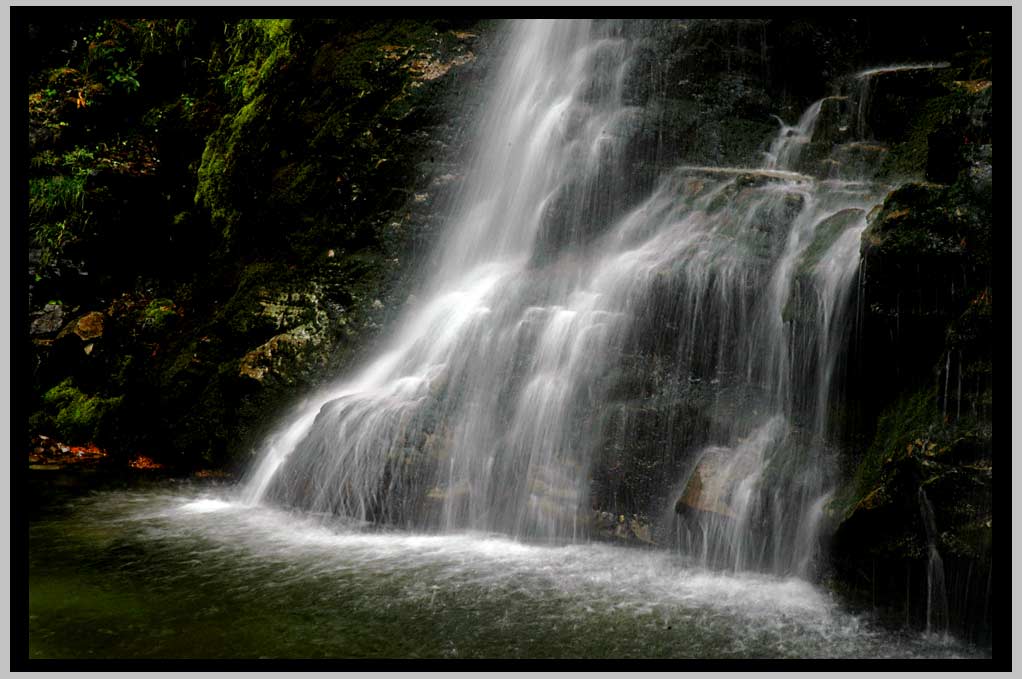

Rockwell Falls, Two Medicine Lake, Glacier National Park, Montana . . .
On the road in the North West. [ click photo for next . . . / buy photo |


Rockwell Falls, Two Medicine Lake, Glacier National Park, Montana . . .
On the road in the North West. [ click photo for next . . . / buy photo |
Information is like the web of links in a wire fence; meaning is
like the cascade of waves on a mountain stream. One you can tie together
endlessly, capturing what you're looking for, and keeping out what
you don't want in. The other, just by drawing a border around it,
disappears before your eyes.
EIGHT MINIATURES ON LEARNING
(1) Schools? A place where the gift of wonder becomes
the fear of failure and exams.
(2) Questions open the door into the unknown, tests shut it.
(3) In all learning, the first thing we need to do is create a space
free of fear.
(4) Awards? Competitions? Why do we not see that the sweet offered
as a reward is the other side of the same stick of punishment? Real
learning transcends the mere conditioning of pleasure and pain, and
ascends to the demonstration of mastery in performance.
(5) The discipline imposed from without quickly
becomes the hurt carried within.
(6) Reading for hours at a time narrows the mind to the stuffy confines
of a room without windows. Listening, in contrast, whether in- or out-
of-doors, is much more alive; it allows the eyes to roam freely about,
no longer straining in a small, constricted field of vision. Listening
allows for great space. And a polyphony of simultaneous, complemen-
tary movements.
Don’t take my word for it. Try it. Experiment!
Take what your reading and record it in your own voice, or let a computer
speak it for you. Then go out side to some, quiet place and listen.
Watch how easily you can follow the flow of what is being said and
still observe the flowers, the birds, the wind in the trees, the move-
ments of clouds and weather. Watch how that, if you go on to write
yourself, with time, much more space will begin to enter in the rhythms
of your prose. And if you compose, you may soon discover for yourself
the most basic of all movements in music— the back and forth of sound
and silence. Listening. It’s perhaps the most beautiful and primary of
the arts.
(7) If we do not love what we teach, order and discipline, which natu-
rally come from within, must be imposed from without. The result is
learning spaces which are all too similar to industrial farms, with their
animals chained in barns and behind fences, monocultures in tight, neat
rows, harvests that fatten but do not nourish, and a soil which hungers
for proper respect and care.
(8) The essence of natural learning is sympathetic love resonance. Here,
a strong inward movement of intelligence awakens a similar movement
in the child. When you know a path by heart and yet still discover it
anew every time you walk it, the child will follow your footsteps per-
fectly without giving it a single thought. When you love the path you
walk, the first step holds all subsequent steps, just as the first sound of
a poem or a symphony holds implicitly the whole story it is about the
tell. A child senses this instantly. The integrity, the craft, the truth of it.
The story is passed on; the seed has been planted. And, most wonder-
fully— afterwards, the first thing a child wants to do is share or teach
what he or she has learned to a friend. This is why the master / appren-
tice relationship ought to be seen as something primary and sacred, and
as the central learning space of choice in all creative traditions.
EIGHT MINIATURES ON LEARNING
is part of THE LITTLE CLAVIER
please preview 150 of 631 pages
w/ my black & white photography
[opens in new window]
If you're a picture-poems fan, please visit my Living Water
Gallery—the best of my flowform photography w/ a selection
of quality prints & frames . . .
[ mouse over for controls / lower right fro full-screen ]
All Photographs & texts by Cliff Crego © 2011 picture-poems.com
(created: IX.15.2007)